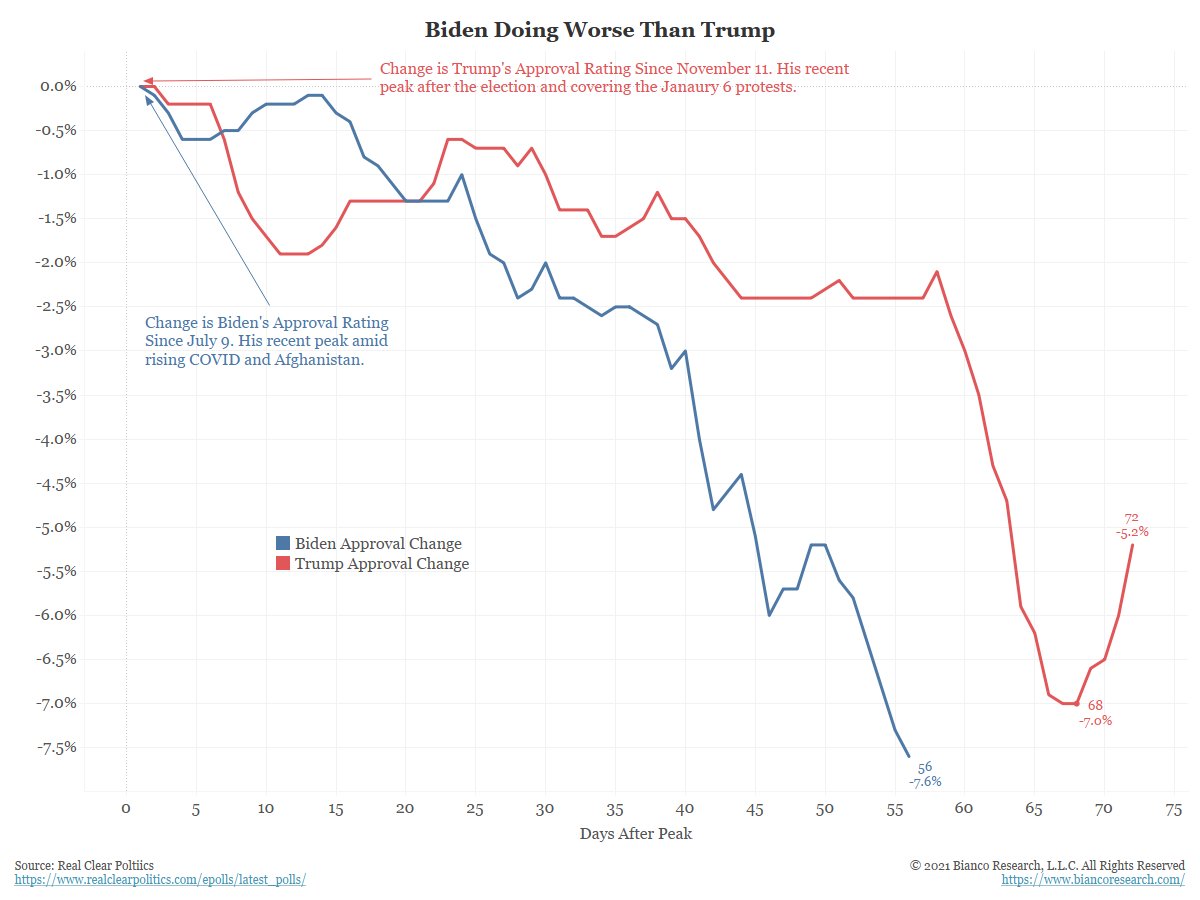
The WSJ just released a Janet Yellen Op-Ed imploring congress to raise the debt ceiling.
Maybe this is not the done deal everyone thinks it is ... a thread to offer some thoughts.
1/6
wsj.com/articles/congr…
Maybe this is not the done deal everyone thinks it is ... a thread to offer some thoughts.
1/6
wsj.com/articles/congr…
So who is Yellen talking to here?
The democrats have the presidency and the majority in the House and the tie-breaking vote in the Senate (50/50, VP breaks ties).
They do not need a single republican vote to raise the debt ceiling.
2/6
The democrats have the presidency and the majority in the House and the tie-breaking vote in the Senate (50/50, VP breaks ties).
They do not need a single republican vote to raise the debt ceiling.
2/6
So what is Yellen worrying about?
Could it be that Biden is losing political cloud?
As this chart shows, and I have mentioned in previous tweets, we are a very polarized country. No one ever changes their opinion (for or against). So a move of this size is significant.
3/6
Could it be that Biden is losing political cloud?
As this chart shows, and I have mentioned in previous tweets, we are a very polarized country. No one ever changes their opinion (for or against). So a move of this size is significant.
3/6

Evidence of this loss of clout is abundant, Joe Manchin (D, WV) is turning against the leader of his party's (Biden) spending plans.
axios.com/scoop-biden-bo…
4/6
axios.com/scoop-biden-bo…
4/6
Ditto Kyrsten Sinema (D, AZ). She is running around the capitol with spreadsheets redesigning her parties spending plans (read: reducing them).
Bernie Sanders has said he will vote no to lesser spending plans. Right now, Biden cannot win.
5/6
axios.com/scoop-sinemas-…
Bernie Sanders has said he will vote no to lesser spending plans. Right now, Biden cannot win.
5/6
axios.com/scoop-sinemas-…
So, is Yellen talking to her own party? Is she worried the democrats are the problem? It certainly is when it comes to Biden's spending plans.
If so, it all comes back to his approval rating collapse over the last two months.
6/6
If so, it all comes back to his approval rating collapse over the last two months.
6/6
• • •
Missing some Tweet in this thread? You can try to
force a refresh











